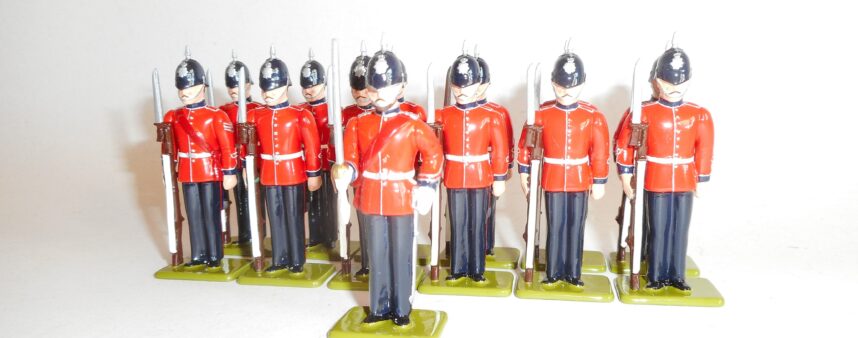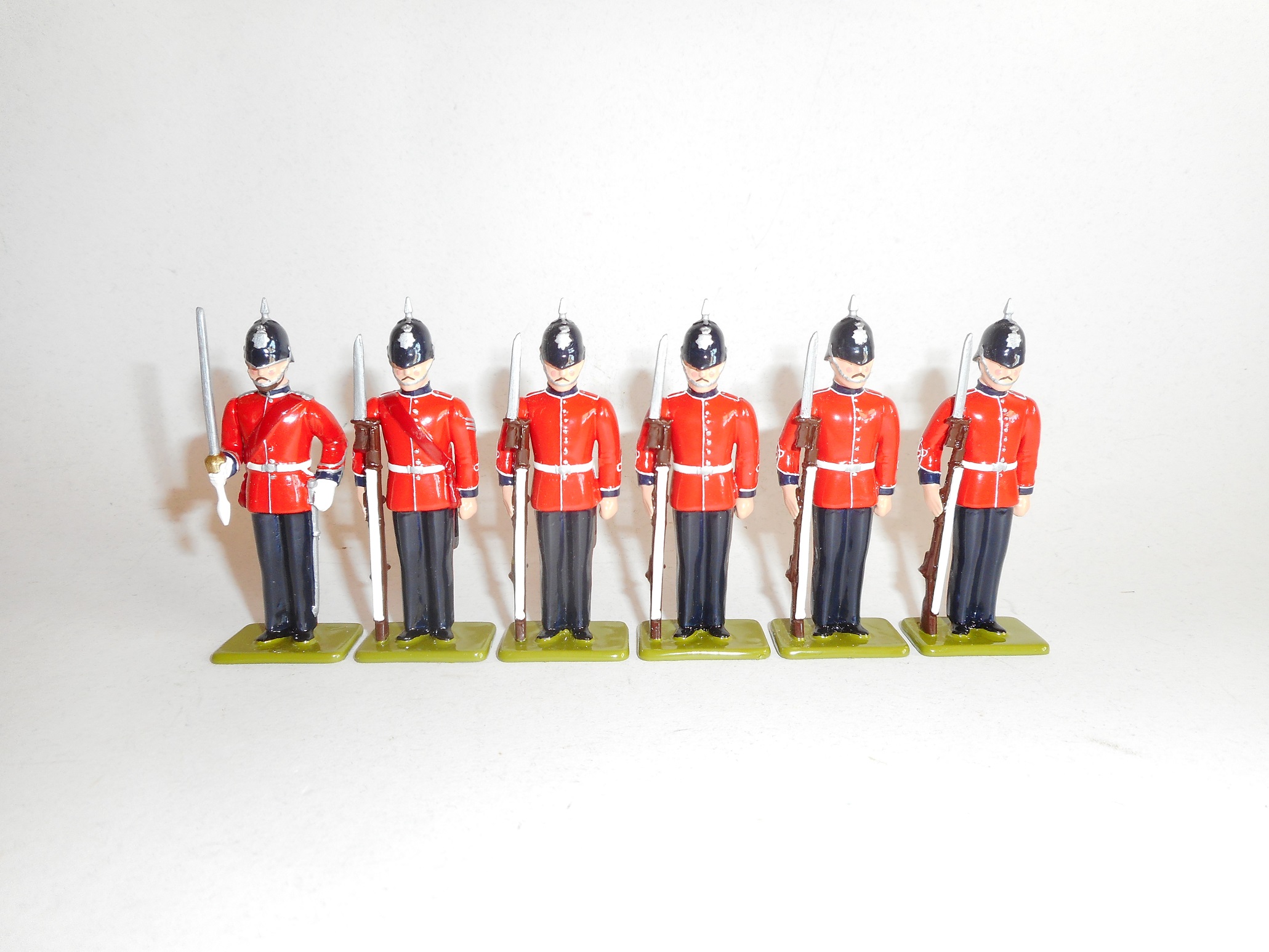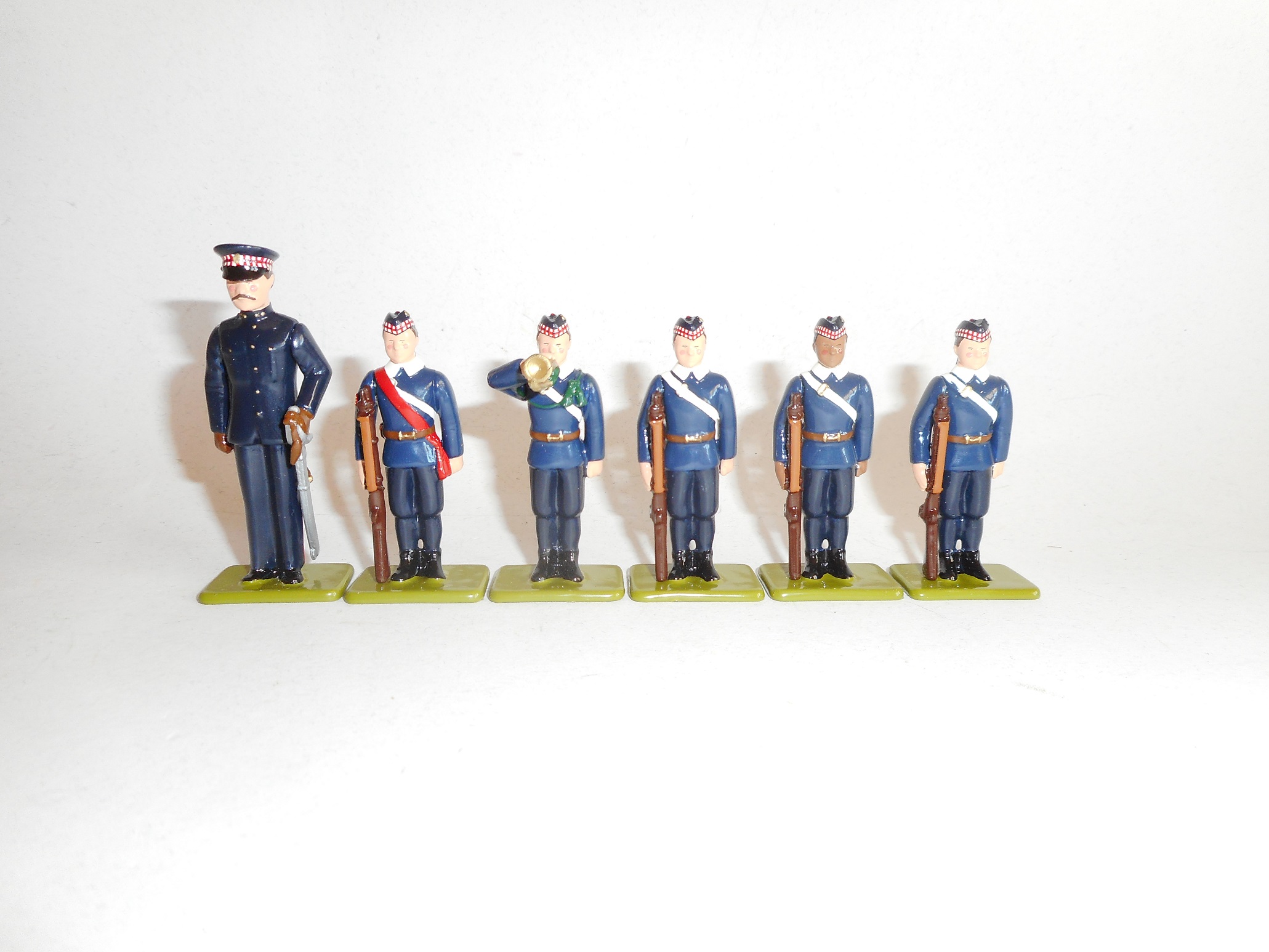Archive for the Regal Category

GREYTOWN RIFLE VOLUNTEERS
To complement Regal’s recent Greytown School Cadets, our latest release of solid pewter sets are the Greytown Rifle Volunteers, 1887.
Formed during the war scare of August 1863, the fortunes of the Greytown Rifle Volunteers waxed and waned until the unit faded away in 1874. Accepted for service in 1878 the resurrected Greytown Rifles served until 1891 when it became the Greytown Rifle Club. A further revival came with the South African War and this time the Greytown Rifles lasted from 1900 to 1911 when the Territorial Act did away with the volunteers.
The Greytown Rifle Volunteers are depicted in the 1882 Dress Regulations, with the Home Service Helmet acquired in 1886, scarlet tunics produced by Veitch and Allan, and the full-dress white belts issued in 1887. They are armed with the medium Snider rifle and sword bayonets.


Regal’s latest offering is a six piece set depicting the Greytown School Cadets, 1904.
The Greytown School Cadets were first formed in 1881 and disbanded in 1893. Revived by 1899 the headmaster H.A. Parkinson had procured three dozen of the model rifles for use by the boys in their physical drill. In 1902 Captain Parkinson added four miniature Martini-Henry Rifles of·.31 calibre for live firing practice to the school’s arsenal. The Defence Act of 1909 abolished both the Public School Cadets and High School Cadets and resulted in the creation of the Junior Cadets and the Senior Cadets but in 1912 the Junior Cadets were in turn abolished and so ended the Greytown School Cadets.

Regal’s new, solid pewter, six-piece set of the Greytown School Cadets, 1904, features an officer, sergeant, bugler and three cadets standing at attention. An add-on set of six cadets is also available. The Greytown Public School Cadets are wearing the uniform suggested by the government of a blue jersey, blue knickerbockers and stockings with a Glengarry cap with diced border adopted throughout New Zealand, often with the addition of an Eaton collar. They are equipped with the model (dummy) rifles of which nearly 15,000 were eventually imported from England by the New Zealand Government, including the pouches issued in 1904 to hold the percussion caps for fire discipline training.

